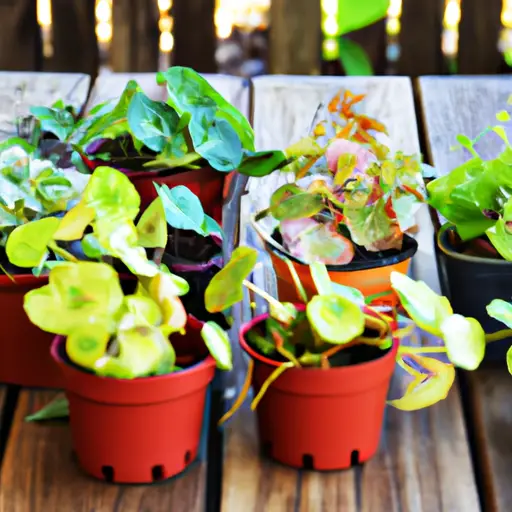Green Thumb on the Go: Tips for Traveling Gardeners with Containers
For avid gardeners, the thrill of nurturing and watching plants grow can be a rewarding experience. But what happens when wanderlust strikes and travel plans are underway? Fear not, green-thumbed globetrotters! With some careful planning and the right tools, it is possible to indulge your love for gardening even while on the go. This article will provide tips for traveling gardeners who wish to take their beloved plants along with them using containers.
1. Choose the Right Plants:
When selecting plants for your travel container garden, opt for varieties that are adaptable and easy to care for. Succulents, cacti, herbs, and dwarf fruit trees are excellent choices as they can withstand periods of neglect and require minimal maintenance.
2. Select Suitable Containers:
Invest in lightweight and durable containers that are specifically designed for travel. Look for pots made from materials like plastic or fiberglass, as they are less likely to break during transit. Ensure that your containers have proper drainage holes to prevent waterlogging.
3. Use Self-Watering Systems:
One of the biggest challenges for traveling gardeners is watering their plants consistently while away. To solve this problem, consider using self-watering systems such as wicking systems or hydrospikes. These devices deliver a controlled amount of water directly to the roots, ensuring your plants receive adequate hydration without overwatering them.
4. Optimize Soil Mixes:
Creating a well-draining soil mix is crucial when gardening in containers. Use a blend of potting soil mixed with perlite or vermiculite to improve drainage and prevent water from sitting at the bottom of the container.
5. Provide Adequate Sunlight:
Plants require sunlight to thrive, so it’s essential to give them access to adequate light even while traveling. Research your destination beforehand and choose accommodations that provide ample natural light or invest in portable grow lights.
6. Coordinate with a Plant Sitter:
If you are planning an extended trip, consider enlisting a plant sitter. This can be a trusted friend, family member, or neighbor who can water your plants and tend to their basic needs in your absence.
7. Prune and Deadhead:
Before embarking on your journey, ensure that you prune any overgrown or leggy plants to promote bushier growth. Deadhead flowers to encourage new blooms and remove any diseased or damaged leaves.
8. Protect Plants during Transit:
To avoid damage during travel, secure your pots in place using foam padding or packing material. Place fragile plants inside plastic bags and cushion them with tissue paper or bubble wrap to prevent breakages.
9. Conduct a Trial Run:
If it’s your first time traveling with plants, do a trial run before setting off on a longer journey. Take a short weekend trip and observe how your containers fare in different weather conditions. Use this opportunity to fine-tune your watering schedule and make adjustments as needed.
10. Enjoy the Process:
Remember that gardening is meant to be enjoyable, even while traveling! Embrace the challenges and adapt as necessary, but most importantly, savor the experience of nurturing living things while exploring new landscapes.
In conclusion, being a traveling gardener with containers is entirely possible with some careful planning and consideration for the needs of your plants. Choose suitable varieties, invest in appropriate containers, use self-watering systems, optimize soil mixes, provide adequate sunlight, coordinate with plant sitters when needed, prune and deadhead regularly, protect plants during transit, conduct trial runs before longer trips, and most importantly – enjoy the process! With these tips in mind, you can satisfy both your green thumb and wanderlust simultaneously. Happy travels!













